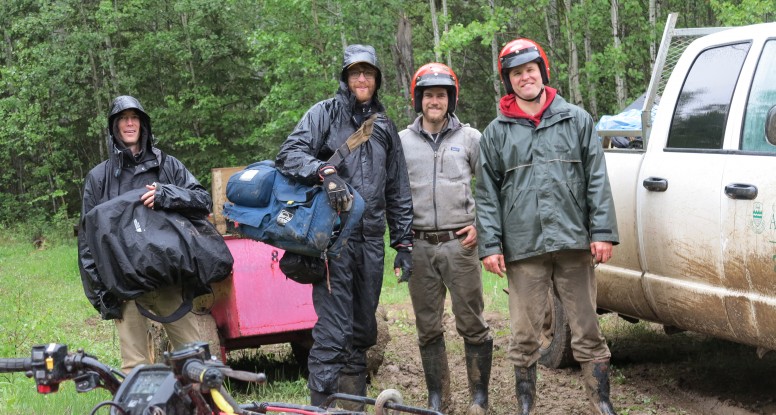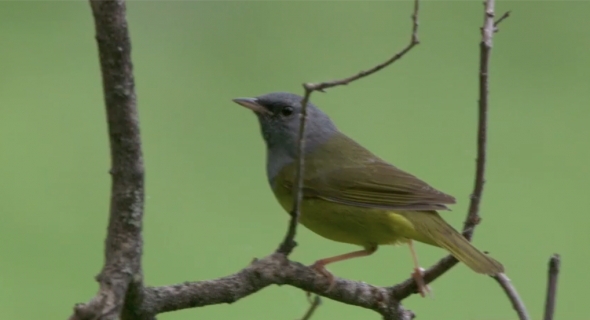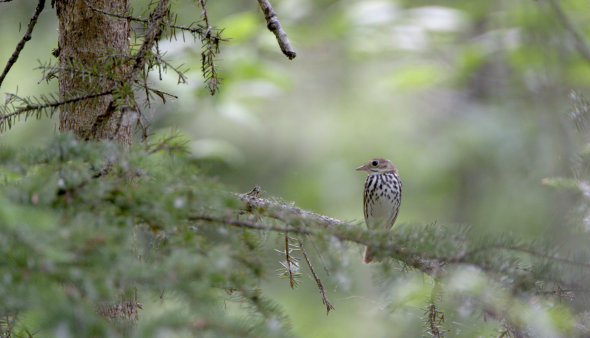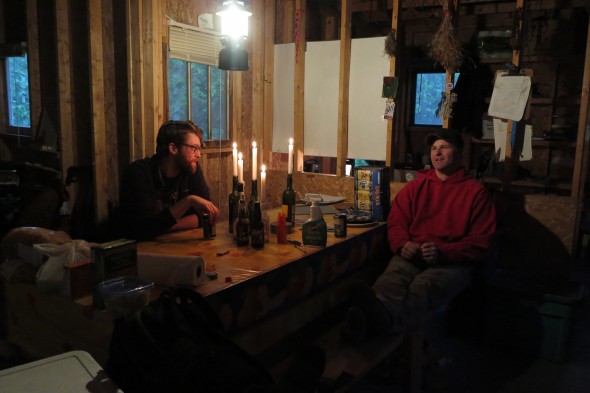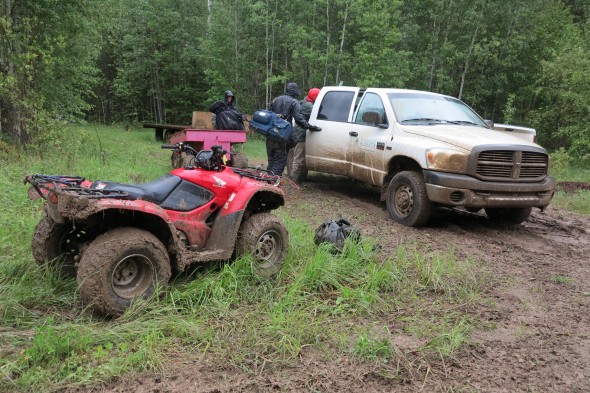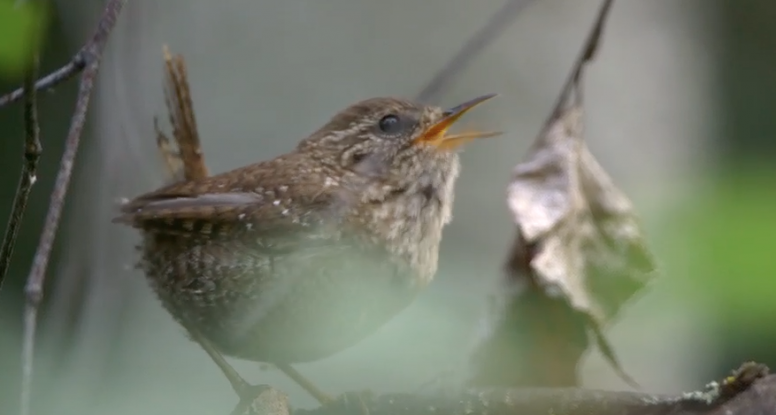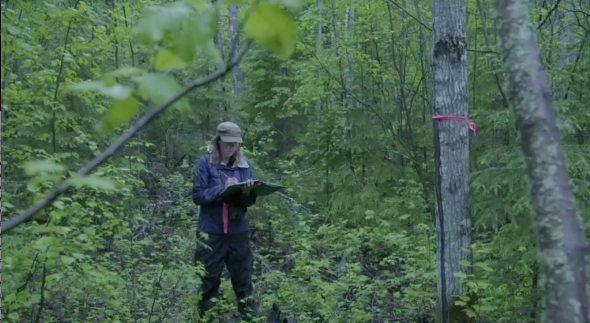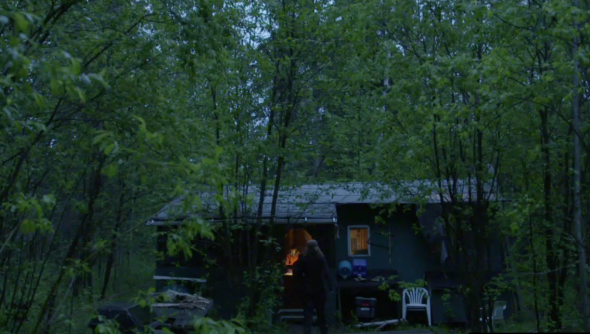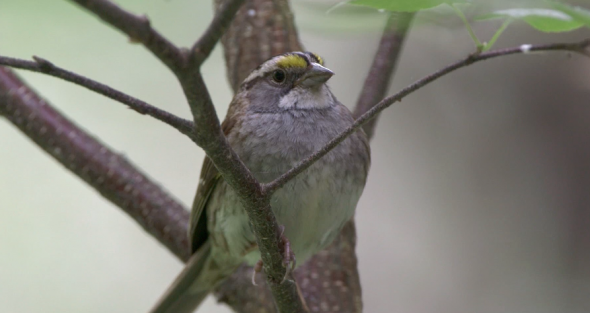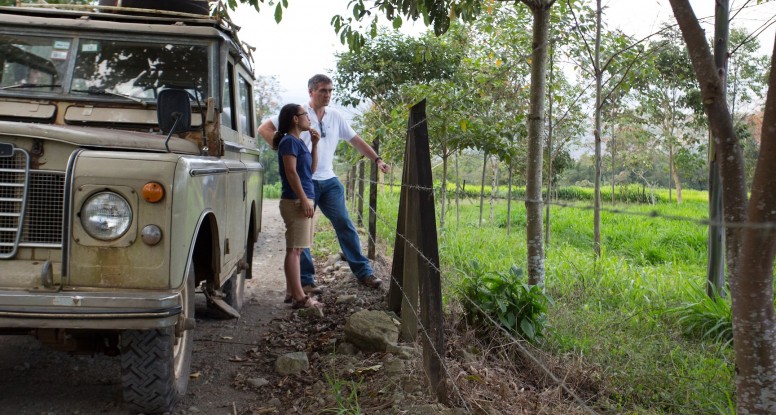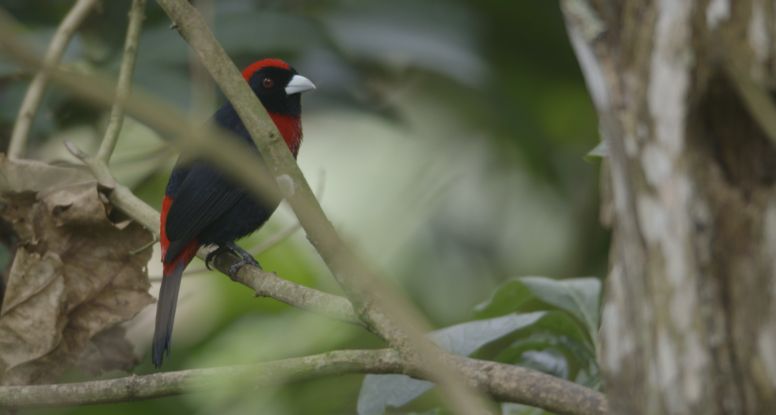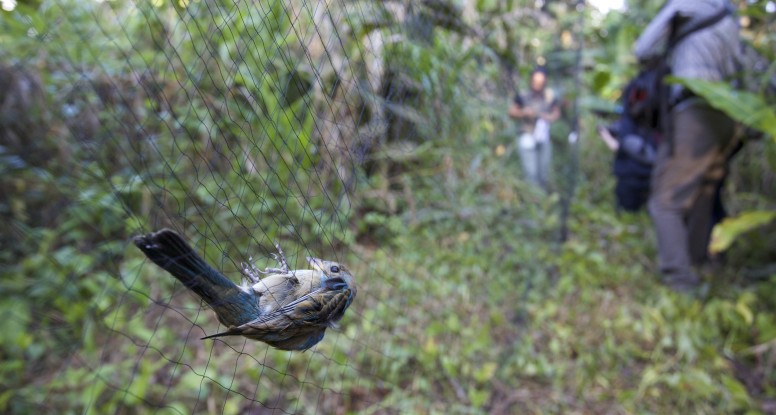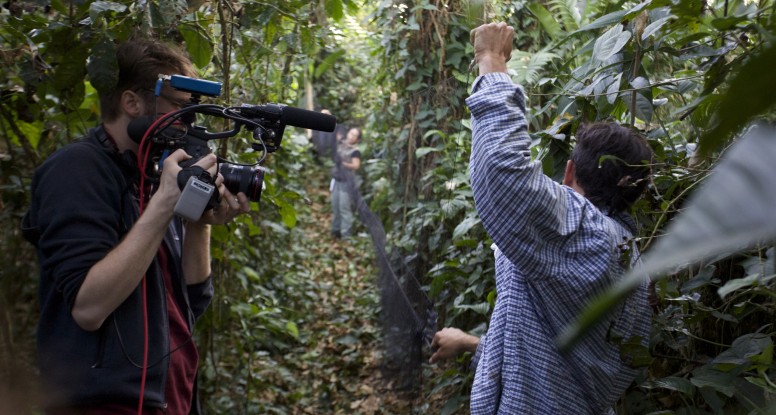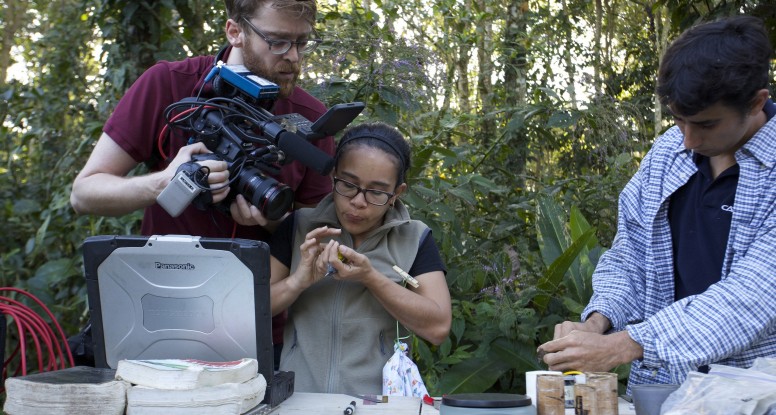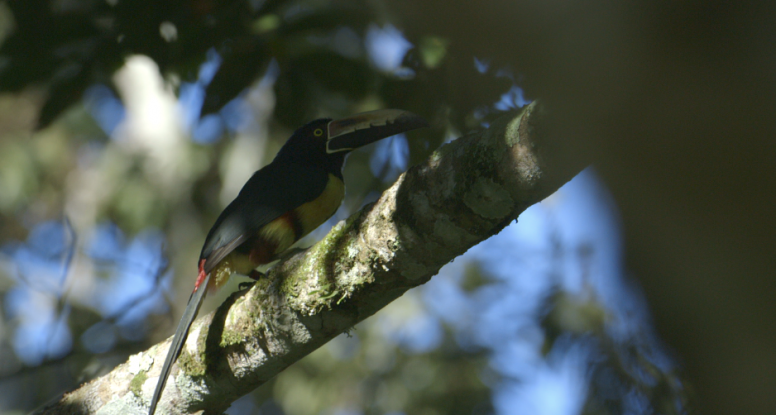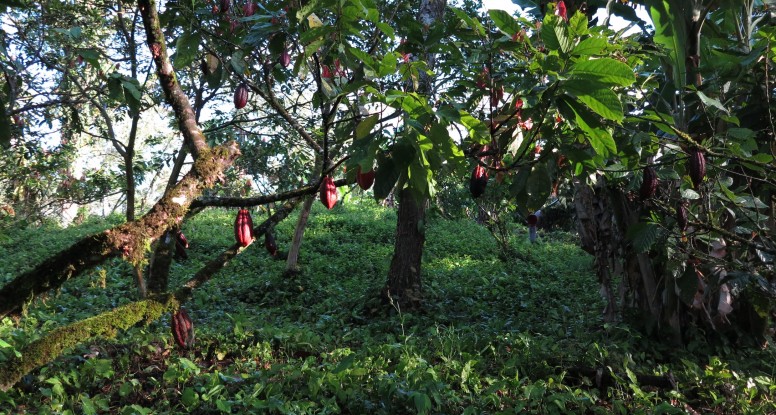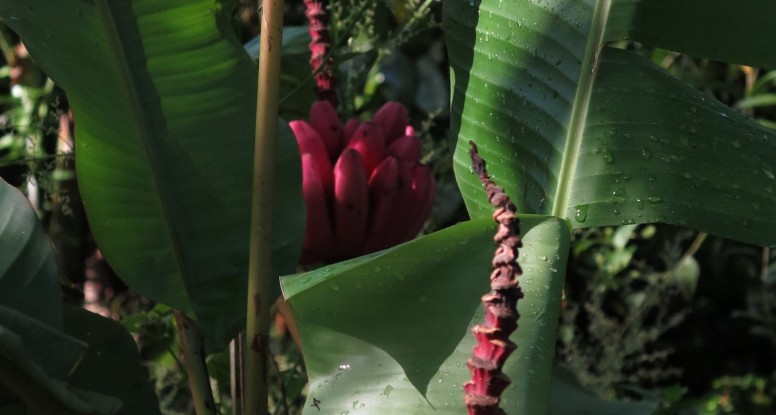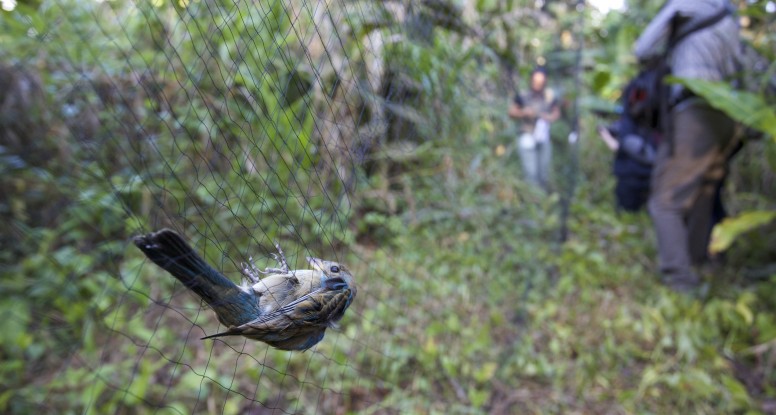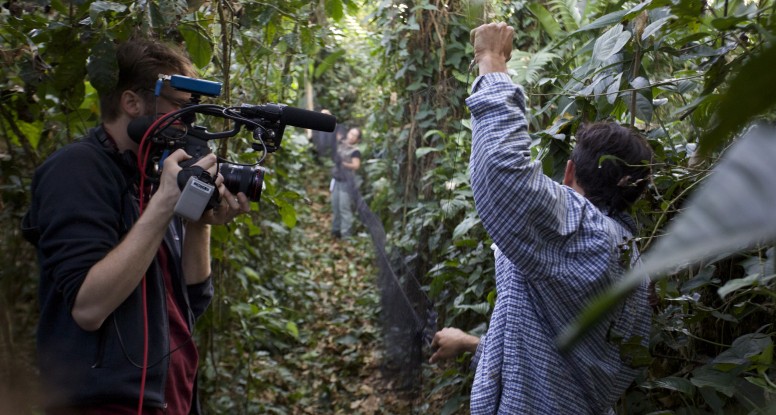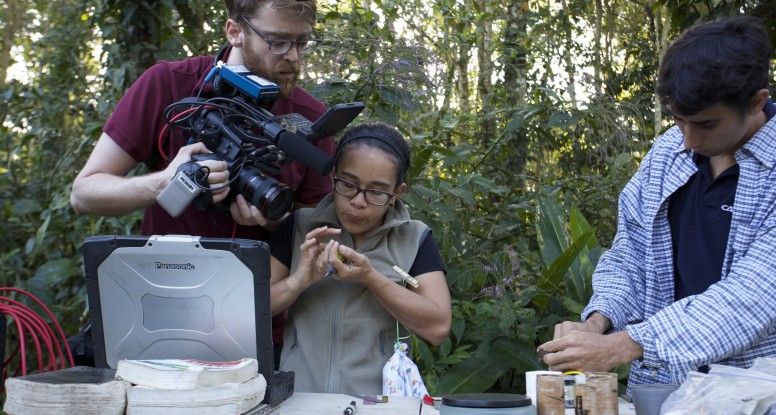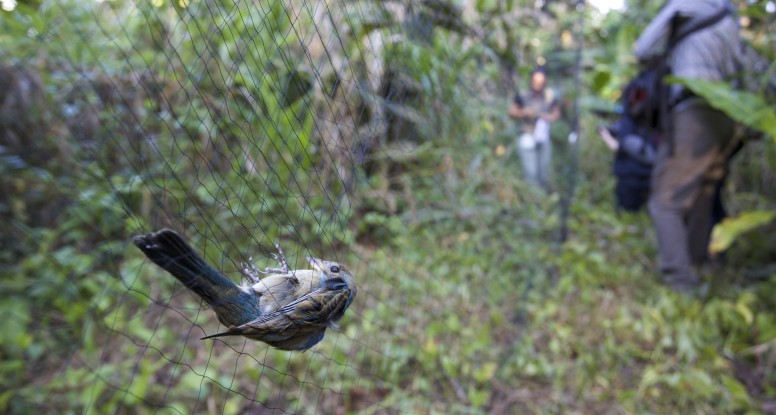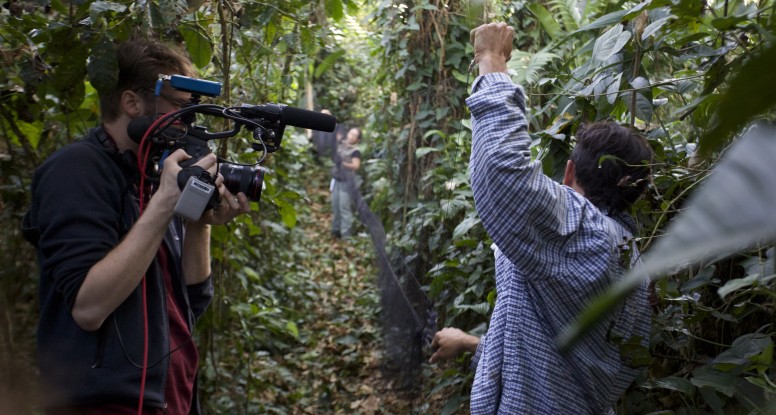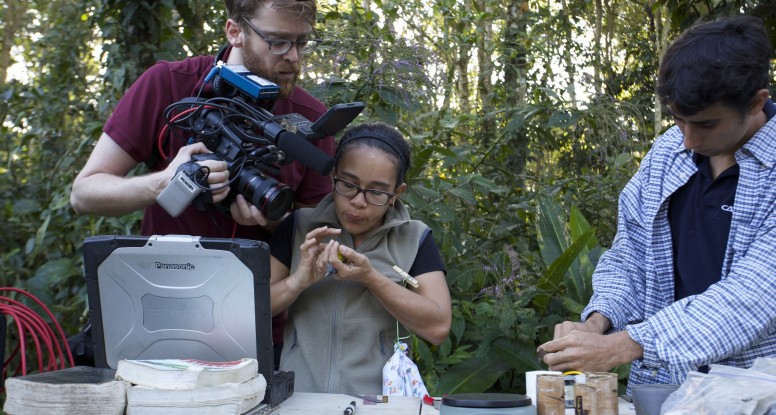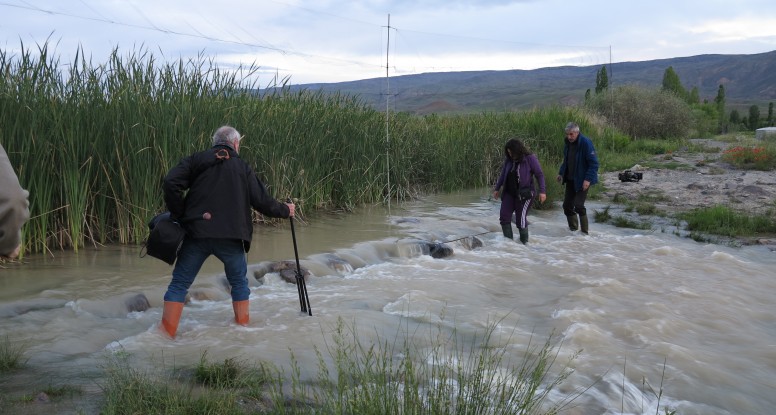The SongbirdSOS crew (Daniel Grant, Jason Milligan, and Josh See) arrived at the airport in northern Alberta to film at the Boreal forest. We rented a very large SUV, loaded our camera and sound gear and drove straight to Slave Lake. Away from the city, I realized our SUV was tiny compared to the monster trucks that rule the road in Alberta. Like our shooting in the Netherlands, we were cursed with rain. Since all of our work is outdoors, this makes filming quite tricky. If you listen closely to the sound in the boreal forest scenes in the documentary, you might even hear the drip drip drip of rain.
We were heading to Calling Lake, where our Boreal host, Dr. Erin Bayne, keeps a small research cabin. Erin was concerned about the road to Calling Lake. It has been raining for days and the road was very soft and muddy. But we made it into the cabin all right and had a great day filming. Erin netted an oven-bird for us, as well we documented two of his researchers doing Point Counts. You can see the stats for Boreal songbirds at the Boreal Avian Modelling Project website.
However, it was the trip back to Athabasca that Erin was really worried about because if we had any more rain, we risked being stuck at the cabin. Well, it poured. But we had to go. So we packed our gear, loaded the ATV’s and truck, and headed down the road through the depths of the Boreal forest.
As Erin suspected, the road was far too soft and the truck sank into the mud. A few kilometers into the journey, we were stuck. Very stuck. After numerous attempts to free ourselves, we eventually walked. For a camera crew this means we had to walk, carrying our gear (ten very heavy cases loaded with expensive equipment as well as our personal back-packs) in a kind of convoy. After a few kilometers, we were rescued by ATV’s that shuttled us to a spot where we would eventually be rescued by a relief biology crew – aka Our Heroes! It took us six hours to travel a mere 13 kilometers. Seven hours later we were wiping ourselves down in the Athabasca Super 8 motel. Good thing they had coin laundry.
Enjoy this one minute cell phone video of three bird biologists and four filmmakers stuck in the mud.

